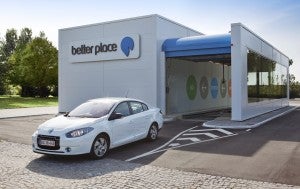This commentary, authored by Robert Fares, originally appeared on Scientific American’s “Plugged In” blog.

Modeled after the successful Defense Advanced Research Projects Agency (DARPA), the Advanced Research Projects Agency – Energy (ARPA-E) uses small grants to bring transformative energy technologies to commercialization. (Source: ARPA-E)
Last month, a subcommittee of the U.S. House of Representatives quietly voted to gut funding for the U.S. Department of Energy’s (DOE’s) efforts to promote innovative energy research. The DOE’s Advanced Research Projects Agency – Energy (ARPA-E) was first on the chopping block. The subcommittee voted to slash its funding from the current level of $252 million to just $50 million—an 80% cut. On top of that, the subcommittee cut funding for the DOE’s work on renewable energy in half.
ARPA-E was created by the 2007 America COMPETES Act, signed into law by then President George W. Bush. The agency is modeled after the successful Defense Advanced Research Projects Agency (DARPA)—credited for transformative innovations like GPS and computer networking. ARPA-E is intended to facilitate small government grants for basic research into transformative energy technologies that are too risky for the private sector. Since its first funding allocation from the Obama administration in 2009, ARPA-E awardees have already doubled the world-record energy density for a rechargeable lithium-ion battery and pioneered a near-isothermal compressed air energy storage system. Read More














 You’ve heard us say before that we are not champions of coal, but we are realists.
You’ve heard us say before that we are not champions of coal, but we are realists.